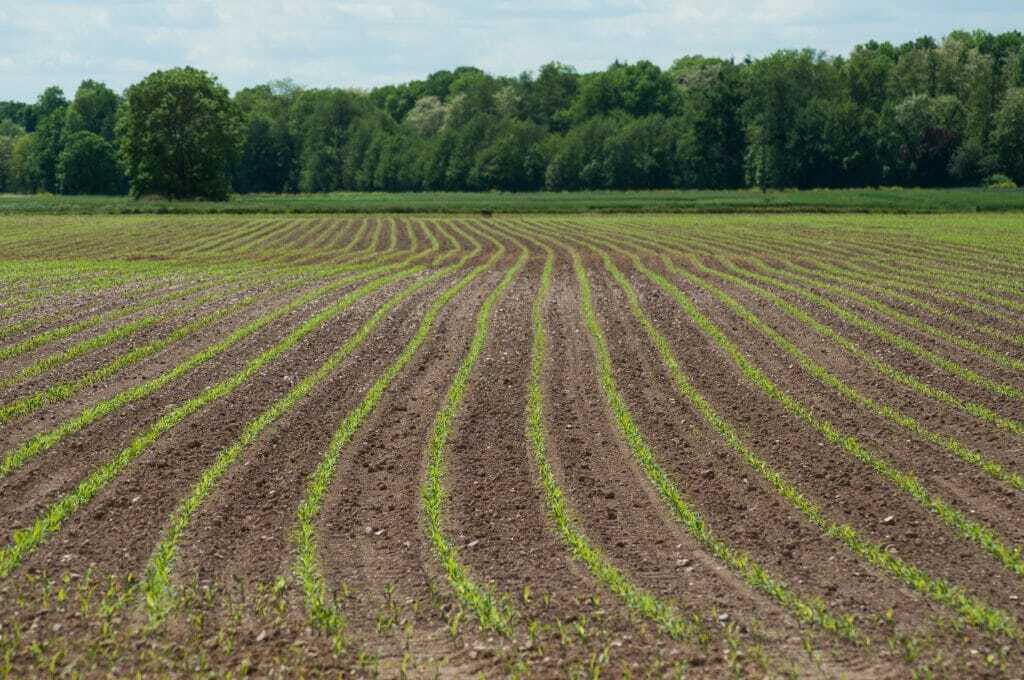Tips for Planning for the Best Corn Crop Possible in 2020
By Lyle Marcus
Many parts of the Latham marketing area continue to deal with the effects of the long 2019 growing season. Farmers have acres they harvested and prepared well for winter; acres they harvested with questionable tillage completed; and acres that still have crop in the field. The abundance of fall moisture combined with an early freeze and heavy snow cover have farmers in many areas wondering what this spring will bring.
The Latham Team has fielded questions from farmers wondering if they should order hybrids that are earlier than they usually plant. The short answer is to plan for usual planting dates. Order hybrids in the relative maturity that you prefer to plant, and then adjust in late spring if Mother Nature doesn’t cooperate.
Much research has been completed on effects of delayed planting to hybrid yield, maturity and profitability. Materials developed by North Dakota State University and the University of Minnesota state that farmers should wait to change from their normal maturity only when planting delays extend past May 25. An Iowa State University field agronomist in May 2019 said Iowa farmers, in general, should be able to plant full-season well-adapted corn hybrids until June 1. While that’s later than what we recommend, especially for Iowa’s northern counties, the point is that research show yields are better from full-season hybrids even if they get in the ground later than the optimal planting window.
Corn planted after May 1 requires about 6.8 fewer growing degree days per day to reach maturity, according to an ISU Extension publication. Purdue University has an online calculator that can help determine growing degree day requirements for late planted corn.
A 2007 ISU newsletter shared results from a Purdue University research project on delayed planting effects on flowering and maturity of dent corn. I found this information interesting as I have seen many times that planting delays did not necessarily translate into significant maturity delays. The Purdue project showed that hybrids planted late shortened time to flowering, had a little longer fill period, but overall they reached maturity nine days quicker on average than early plantings of those same hybrids. The research also showed the reduction in time spent in vegetative growth outweighs the increased time spent in reproductive growth.
Purdue’s research on hybrid response to late versus early planting showed time in vegetative growth was reduced by 14 days, from 75 to 61 days, for a 14-day reduction for late planted hybrids. Whereas, time in reproductive growth was increased by 5 days, from 68 to 63 days, for 5-day increase for late planted hybrids. The hybrids adjusted to the shorter growing season by reducing 9 days total (-14 + 5 = -9 days). In summary, hybrids compensate for late planting mostly by shortening the time necessary to reach silking. The old story that hybrids can adapt to the environment holds true. See references to this information below.
At Latham Hi-Tech Seeds, we will continue to help our dealers and customers make the best decisions to create the highest yield potential with greatest return possible for every acre. Today that means a cropping plan of traditional maturities for your farm, but we will be prepared to help adjust those plans should spring of 2020 require a change in plans.
References
- Integrated Crop Management extension newsletter on pages 130-131 of the IC-498 (8) April 30, 2007, issue
- Summary of Agronomy Journal publication May-June 2002, “Delayed Planting Effects on Flowering and Grain Maturation of Dent Corn”
- https://extension.umn.edu/corn-planting/considerations-late-planted-corn-minnesota
- https://www.researchgate.net/publication/242231272_Delayed_Planting_Effects_on_Flowering_ and_Grain_Maturation_of_Dent_Corn
- https://www.extension.iastate.edu/news/iowa-farmers-face-planting-decisions-and-deadlines
